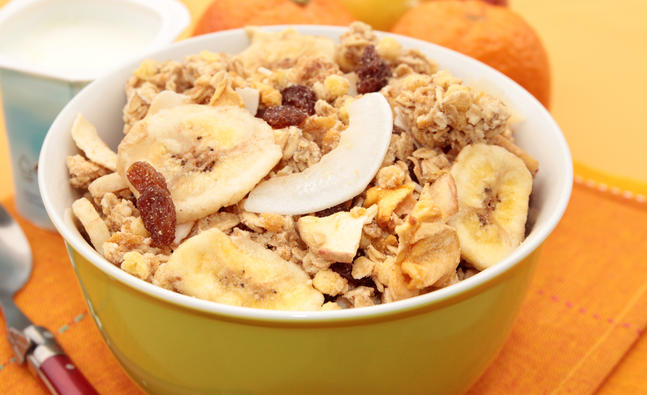Why Is the 21 Day Fix Diet Blowing Up Online—and Does It Actually Work?
Drop up to 15 pounds in just three weeks? The 21 Day Fix claims to help anyone do just that. And evidently, people are intrigued. According to Google, the weight-loss trend was one of the most searched diets in 2015 and spiked on Pinterest by a whopping 190 percent that same year.
Naturally, we had to ask the experts if it's really worth the hype, or if the 21 Day Fix is just another weight-loss gimmick. The lowdown:
How It Works
The diet revolves around the idea that it takes 21 days to successfully create a healthy habit, and was created by National Academy of Sports Medicine certified celeb trainer Autumn Calabrese—who, fun fact, is also a bikini competitor. "This diet combines portion control with regular physical activity to promote weight loss in three weeks," says Leigh Tracy, R.D., a dietitian at The Center for Endocrinology at Mercy Medical Center in Baltimore.
The Plan
Despite the fact that controlling your portions and working out aren't exactly groundbreaking, dieters seem to be drawn in by the way the diet organizes each meal.
As part of the program, 21 Day Fixers receive color-coded containers to measure your portions, says Ashvini Mashru, R.D., author of Small Steps to Slim. These include an 8 ounce green container for veggies, an 8 ounce purple container for fruits, a 6 ounce red container for proteins, a 5.3 ounce yellow container for carbs, two 2.7 ounce orange containers for seeds and dressings, and a Shakeology cup for shakes.
To find out how much you can eat each day, you start by calculating your specific caloric intake. Multiply your current weight by 11 and add 400 (which covers the calories burned during your daily workout.). That number is the daily calorie intake you need to maintain your weight. To find out how much you need to eat to lose weight, subtract 750.
Based on that calorie intake, the plan assigns you a daily container allowance. For example, if you're within the 1,200 to 1,499 calorie range, you're allowed three green (veggies), two purple (fruits), four red (proteins), two yellow (carbs), and one orange (seeds and dressings) per day.
The guide breaks down each container with a list of foods that you can eat, which makes it easier to create a weekly meal plan.
Along with the portioned containers and eating plan, dieters receive two workout DVDs and an exercise schedule that includes seven 30-minute workouts for each day of the week. (Sweating yet?)
Check out other diet trends throughout history:
The Pros and Cons
Though the containers eliminate the need to track your meals and the plan encourages whole foods, if you don't love prepping your meals ahead of time or expanding your grocery bill, you might struggle with the general structure. "Most of the meals are expensive or time consuming to make," she says. "And you might find the small portions of food to be too restrictive," she says. That could lead to falling off the wagon or bingeing after the 21 days are up, says Mashru.
At the same time, requiring workouts every single day for nearly a month can be super frustrating, she adds. Especially since these workouts aren’t for beginners.
Lastly, like most trendy diets, the 21 Day Fix doesn't go beyond the three weeks it was designed to fit into. Though some people might continue to watch their portions and work out on the regular, others might revert back to their previous lifestyle habits, which could lead to gaining back the weight they lost.
The Verdict
It may not be the best course of action, says Mashru. "It's true that most people will be able to lose at least some weight on the 21 Day Fix, but for a long-term weight-loss solution, it may be better to find a program that's more flexible," she says. In other words, you'll probably find that living life by a "container diet" isn't living at all.
-
Top 10 Natural Diuretics For Weight Loss
Natural diuretics are natural foods or herbs that help to increase the
-
Do you exercise hard enough?
-
5 Real Women Share Their Biggest Weight-Loss Game Changers
If you've tried losing weight in the past but were held up by frus
-
Avoid undereating to lose weight
-
3 Sneaky salty foods for which to watch out
-
Ditch the ice cream for a frozen banana
- DON'T MISS
- Measure what you eat
- Why You Cant Lose Weight
- Everyone Is Obsessed with Cloud Bread—But Is It Actually Good For You?
- Conquering the sugar craving
- Top habits of successful dieters: Stay faithful
- Have you tried the Eco Diet?
- Do weight loss patches work?
- How to Lose Weight Without Changing What You Eat
- Chew on this!
- Im Sticking to My Diet Perfectly—So How Come Im Not Losing Weight?




